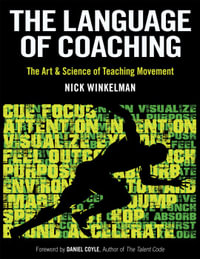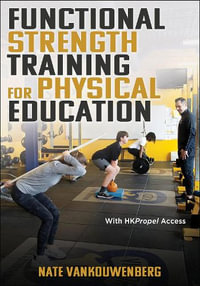
Understanding and Preventing Noncontact ACL Injuries
By: American Orthopaedic Society for Sports Medicine (Editor)
Hardcover | 21 March 2007 | Edition Number 1
At a Glance
344 Pages
18+
23.5 x 16 x 2.5
Hardcover
Limited Stock Available
RRP $197.75
$187.90
or 4 interest-free payments of $46.98 with
orWith more than 200,000 athletes each year suffering noncontact injury to the anterior cruciate ligament (ACL) of the knee, there is finally an up-to-date reference for professionals whose work involves developing and implementing programs to prevent such injuries. Understanding and Preventing Noncontact ACL Injuries provides an authoritative description of the biomechanical, clinical, and injury factors pertinent to the athletes—primarily girls and young women—who experience this problem.
To help readers understand how to incorporate targeted interventions, the book uses a preventive rather than strictly clinical approach to ACL injuries. It provides a thorough description of the current problem on an international scale, the rationale for developing prevention programs, the discrete risk factors for noncontact ACL injuries, and an analysis of current research data on the effects of interventions designed to prevent these injuries.
Understanding and Preventing Noncontact ACL Injuries will help readers
-clearly understand the incidence, cost, and need to quantify risk factors related to the onset of noncontact ACL injuries;
-compare various prevention programs and learn why prevention programs should be implemented—especially among young women—to reduce the potential for injury; and
-understand the interplay between biomechanical and neuromuscular risk factors and become aware of the role hormones, bracing, and biofeedback play.
Understanding and Preventing Noncontact ACL Injuries is based on proceedings from a conference conducted by the American Orthopaedic Society for Sports Medicine and draws on the work of renowned experts in the field. The book logically progresses through four parts to help physicians, professionals, coaches, and other readers better understand the problem and how they may play a part in its prevention. Part I addresses the problem of ACL injuries, including the incidence of injury, risk factors, and costs associated with injuries. Part II examines injury prevention programs, their similarities and differences, and their relative effectiveness. Part III presents the latest information on biomechanical and neuromuscular mechanisms of ACL injuries. Part IV explores hormonal and anatomic risk factors and preventive bracing for ACL injuries.
To illustrate the preventive approaches that may be used, the book contains photographs of individuals actually performing the progressions involved in the programs. Other helpful resources include take-home messages and clinical notes that relate scientific findings to successful preventive efforts. By providing these tools, the authors hope to provide an easy-to-understand reference that appeals to a broad range of individuals, including athletic directors, coaches, parents, and athletes who would like to learn more about how to implement prevention programs in their schools or other organizations.
Understanding and Preventing Noncontact ACL Injuries is a current and unique resource that will be useful for all people affected by this global issue. By combining scientific factors with injury mechanisms, the book will provide readers with valuable knowledge of ACL injuries and help readers implement programs to prevent them.
An Introduction to Understanding and Preventing ACL Injury
Timothy Edwin Hewett, PhD, FACSM
Summary
Part I. The Problem of ACL Injuries
Part Editor: Letha Y. Griffin, MD, PhD
Chapter 1. Incidence of ACL Injury
Stephen W. Marshall, PhD; Darin Padua, PhD, ATC; and Melanie McGrath, MS, ATC
Human Movement and ACL Injury
What Is Incidence?
What Is the Average Incidence of ACL Injury in the General Population?
National Ambulatory Care Surveys
Summary
How Does ACL Injury Incidence Vary by Age and Gender?
How Does the Incidence of ACL Injury Vary By Sport and Gender?
Literature Review Methods
Abstraction of Incidence Data
General Results
Synthesis and Commentary
Conclusions
Recommendations for Future Research
Chapter 2. Does ACL Reconstruction Prevent Articular Degeneration? The ACL Risk Equation
Paul H. Marks, MD; Kurt P. Droll, MD; and Michelle Cameron-Donaldson, MD
Meniscal Pathology
Osteochondral Pathology
Impaired Proprioception
Biochemical Mediators
Summary and Future Work
Chapter 3. The Costs Associated With ACL Injury
Timothy Edwin Hewett, PhD, FACSM; and Bohdanna T. Zazulak, DPT, MS, OCS
Who Pays for ACL Injury Prevention in the High-Risk Female Athlete?
Informing the High-Risk Female Athlete
Summary
Part II. ACL Injury Prevention Programs
Part Editor: Timothy E. Hewett, PhD, FACSM
Chapter 4. Components of Prevention Programs
Holly J. Silvers, MPT
Chapter 5. Theories on How Interventions May Influence ACL Injury Rates:
The Biomechanical Effects of Plyometric, Balance, Strength, and Feedback Training
Timothy Edwin Hewett, PhD, FACSM; Gregory D. Myer, MS, CSCS; and Kevin R. Ford, MS
Single-Component Training
Multicomponent Training
Effects of a Comprehensive Program Combined With Either Plyometric or Balance Training Components
Conclusions and Future Directions
Chapter 6. Preventive Training Programs: Changing Strength Ratios Versus Positions of Muscular Efficiency
Sandra J. Shultz, PhD, ATC, CSCS
Thigh Strength
Hip Strength
Core Strength
Summary
Chapter 7. Effect of Prevention Programs on Performance
Christopher M. Powers, PhD, PT; Christine D. Pollard, PhD, PT; and Susan M. Sigward, PhD, PT, ATC
Performance Measure: Vertical Jump Height
Performance Measures: Agility, Strength and Lunge Distance
Performance Measures: Vertical Jump Height, Single-Leg Hop, Speed, and Strength
Performance Measure: Single-Limb Stability
Performance Measures: Balance, Strength, Single-Leg Hop, Triple Jump, and Stair Hop
Summary
Chapter 8. Congruence Between Existing Prevention Programs and Research on Risk Factors and Mechanisms of Noncontact ACL Injury
William E. Garrett, Jr., MD, PhD; and Bing Yu, PhD
ACL Loading Mechanisms and Risk Factors of Noncontact ACL Injury
Current Training Programs
Future Training Program Development
Chapter 9. Discussion, Summary, and Future Research Goals
Lars Engebretsen, MD, PhD
Part III. Biomechanical and Neuromuscular Mechanisms of ACL Injuries
Part Editor: Timothy Edwin Hewett, PhD, FACSM
Chapter 10. Biomechanics Associated with Injury: Athlete Interviews and Review of Injury Tapes
Tron Krosshaug and Roald Bahr, MD, PhD
Defining Injury Mechanisms
Describing the Inciting Event
Research Approaches to Describe the Injury Mechanisms
Literature Search
Athlete Interviews
Video Analysis
Conclusions
Chapter 11. Clinical Biomechanical Studies on ACL Injury Risk Factors
Laura J. Huston, MS
Background
Kinematic and Kinetic Differences
Jump Landings
Sidestep and Cutting Maneuvers
Muscular Differences
Altered Muscle Activation Patterns
Conclusions
Chapter 12. Effects of Neuromuscular Training on Lower Extremity Motion Patterns
Bing Yu, PhD; and Marlene DeMaio, MD
Combined Training Programs Including Plyometrics
Chapter 13. Sport-Specific Injury Mechanisms Associated With Pivoting, Cutting, and Landing
Mary Lloyd Ireland, MD
Gender Comparisons
Definitions of Mechanism of Injury
Soccer
Team Handball
Basketball
Gender Differences
Conclusions
Chapter 14. Effects of Muscle Firing on Neuromuscular Control and ACL Injury
Timothy Edwin Hewett, PhD, FACSM; Bohdanna T. Zazulak, DPT, MS, OCS; and Gregory D. Myer, MS, CSCS
Introduction
Differences in EMG Activation Levels Between Males And Females
Summary and Conclusions
Chapter 15. Etiology and Mechanisms of ACL Injury in Alpine Skiing
Bruce D. Beynnon, PhD; Carl F. Ettlinger, MSME; and Robert J. Johnson, MD
The Epidemiology of Alpine Skiing Injuries
ACL Injury Mechanisms Associated With Alpine Skiing
Summary
Chapter 16. Noncontact ACL Injuries in Dance and Skating
Carol D. Teitz, MD
Muscular Control
Shoe-Surface Interface
Center Of Gravity and Proprioception
Choreography
Miscellaneous
What About Gymnasts?
Summary
Chapter 17. The Role of Biofeedback in Preventing Noncontact ACL Injuries
Julie R. Steele, PhD; Bridget J. Munro, PhD
The Role of Biofeedback in ACL Injury Prevention
Biofeedback, Neuromuscular Activity and ACL Injury Prevention
Biofeedback, Knee Joint Motion and ACL Injury Prevention
The Role of Biofeedback in Preventing ACL Reinjury
Future Directions for Biofeedback and ACL Injury Prevention
Part IV. Hormonal and Anatomic Risk Factors and Preventive Bracing for ACL Injuries
Part Editor: Sandra J. Shultz, PhD, ATC, CSCS
Chapter 18. Ligament Biology and Its Relationship to Injury Forces
James R. Slauterbeck, MD; John R. Hickox, MS; and Daniel M. Hardy, PhD
Relationships Among ACL Injury Factors
Effects of Tissue Remodeling
Sex, Hormones, and ACL Injury
Chapter 19. Hormonal Influences on Ligament Biology
Sandra J. Shultz, PhD, ATC, CSCS
Sex Hormone Profiles: Not all Menstrual Cycles Are Created Equal
Sex Hormones Effects on Collagen Structure and Metabolism
Sex Hormones and Knee Joint Laxity and Stiffness
Menstrual Cycle and ACL Injury
Summary
Birth Control Hormones, Ligament Biology and ACL Injury
Summary
Chapter 20. Anatomical Factors in ACL Injury Risk
Sandra J. Shultz, PhD, ATC, CSCS; Anh-Dung Nguyen, MS Ed, ATC; and Bruce D. Beynnon, PhD
Notch Size and Width
Generalized Joint Laxity
Anterior Knee Laxity
Anatomical Alignment
Conclusions
Chapter 21. Intrinsic and Extrinsic Forces Associated With ACL Injury: Can Functional Bracing Reduce the Risk of ACL Injury?
Bruce D. Beynnon, PhD; and James R. Slauterbeck, MD
The Biomechanics of Knee Bracing
The Effectiveness of Braces in Preventing ACL, ACL Graft, and ACL-Deficient Knee Injuries
Conclusion
References
Index
About the Editors
ISBN: 9780736065351
ISBN-10: 0736065350
Published: 21st March 2007
Format: Hardcover
Language: English
Number of Pages: 344
Audience: Professional and Scholarly
For Ages: 18+ years old
Publisher: Human Kinetics
Country of Publication: US
Edition Number: 1
Dimensions (cm): 23.5 x 16 x 2.5
Weight (kg): 0.67
Shipping
| Standard Shipping | Express Shipping | |
|---|---|---|
| Metro postcodes: | $9.99 | $14.95 |
| Regional postcodes: | $9.99 | $14.95 |
| Rural postcodes: | $9.99 | $14.95 |
How to return your order
At Booktopia, we offer hassle-free returns in accordance with our returns policy. If you wish to return an item, please get in touch with Booktopia Customer Care.
Additional postage charges may be applicable.
Defective items
If there is a problem with any of the items received for your order then the Booktopia Customer Care team is ready to assist you.
For more info please visit our Help Centre.
You Can Find This Book In
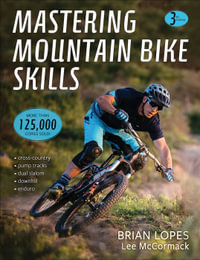
BLACK FRIDAY
Mastering Mountain Bike Skills (3rd Edition)
Cross-Country, Pump Tracks, Dual Slalom, Downhill, Enduro
Paperback
RRP $48.99
$24.50
OFF
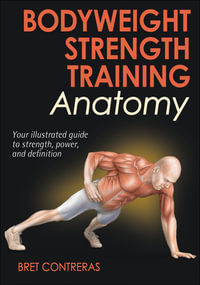
BLACK FRIDAY
Paperback
RRP $48.99
$29.50
OFF
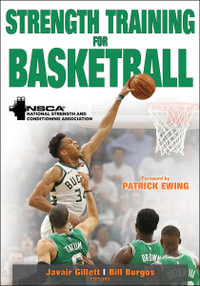
BLACK FRIDAY
RRP $64.99
$32.50
OFF
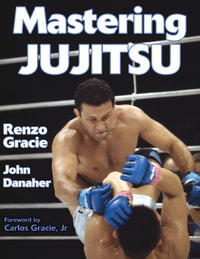
BLACK FRIDAY
RRP $54.99
$27.50
OFF
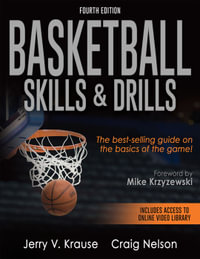
BLACK FRIDAY
RRP $58.99
$29.50
OFF
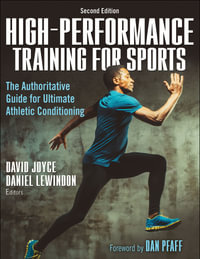
BLACK FRIDAY
Paperback
RRP $88.99
$22.25
OFF
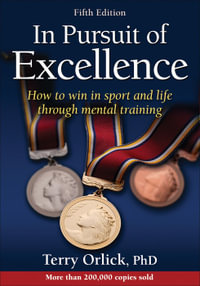
BLACK FRIDAY
RRP $46.99
$23.50
OFF

BLACK FRIDAY
Paperback
RRP $35.75
$17.90
OFF
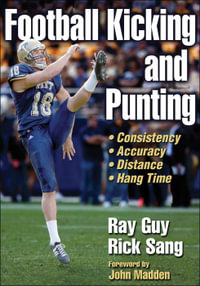
BLACK FRIDAY
Paperback
RRP $47.50
$11.90
OFF
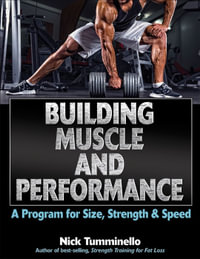
BLACK FRIDAY
Paperback
RRP $47.50
$23.75
OFF
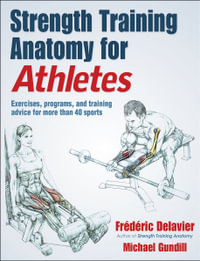
BLACK FRIDAY
RRP $54.99
$27.50
OFF

BLACK FRIDAY
Paperback
RRP $77.99
$19.50
OFF
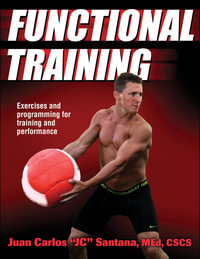
BLACK FRIDAY
RRP $48.99
$12.25
OFF
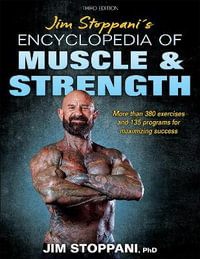
BLACK FRIDAY
RRP $77.99
$23.50
OFF
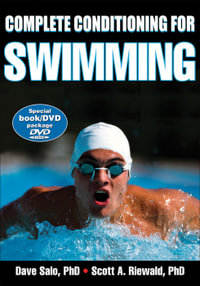
BLACK FRIDAY
Book with Other Items
RRP $58.99
$29.50
OFF
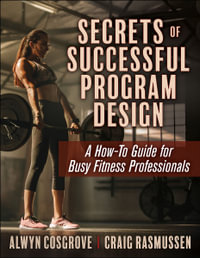
BLACK FRIDAY
RRP $68.99
$34.50
OFF
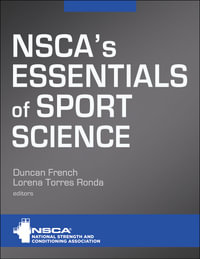
BLACK FRIDAY
Hardcover
RRP $195.00
$97.50
OFF
This product is categorised by
- Non-FictionMedicinePre-Clinical Medicine & Basic SciencesAnatomy
- Non-FictionMedicineOther Branches of MedicineSports Injuries & Medicine
- Non-FictionMedicineClinical & Internal MedicineMusculoskeletal Medicine
- Non-FictionMedicineNursing & Ancillary ServicesRehabilitation
- Non-FictionMedicineSurgery
- BargainsNon-Fiction BargainsMedicine Bargains

